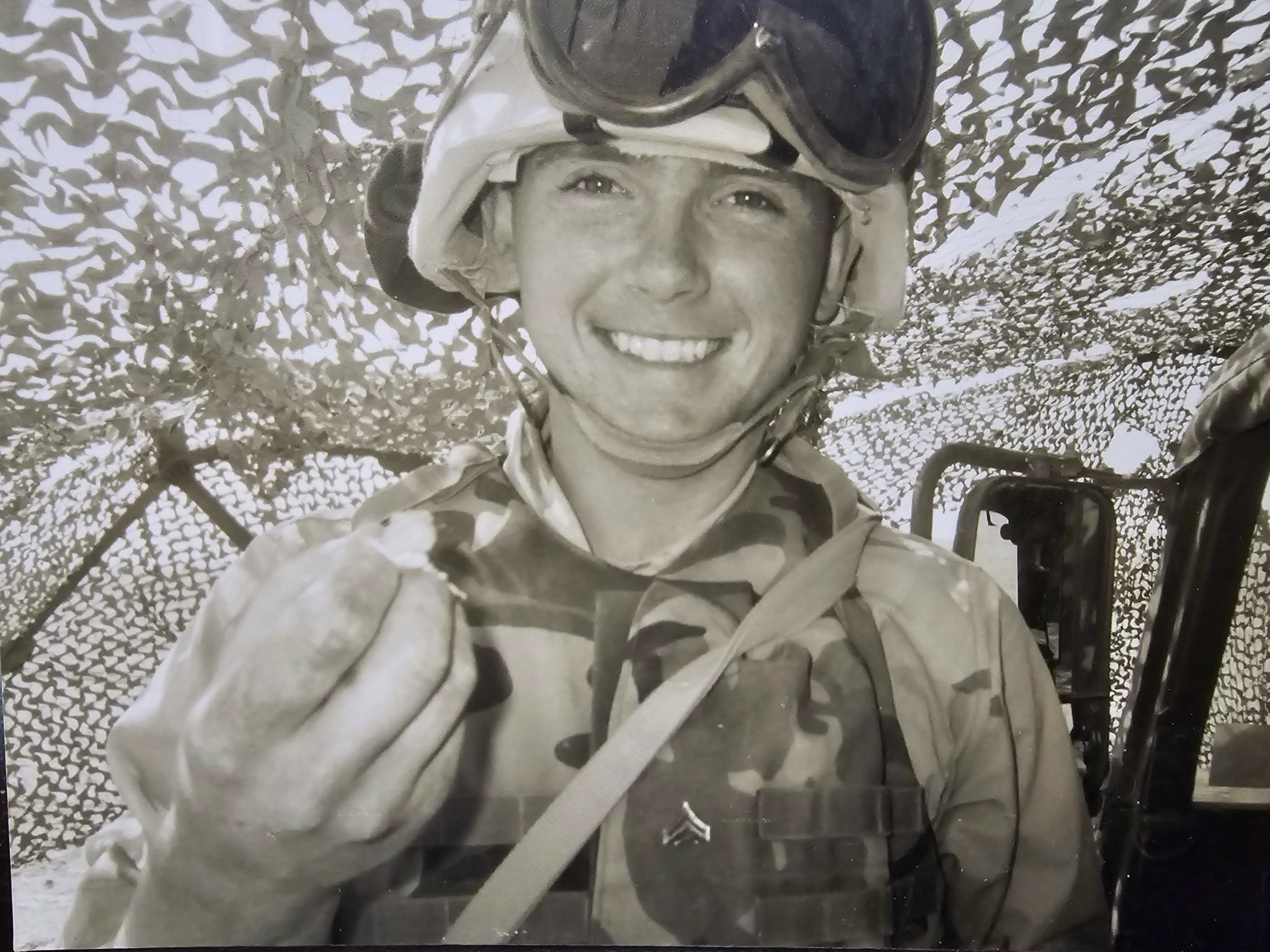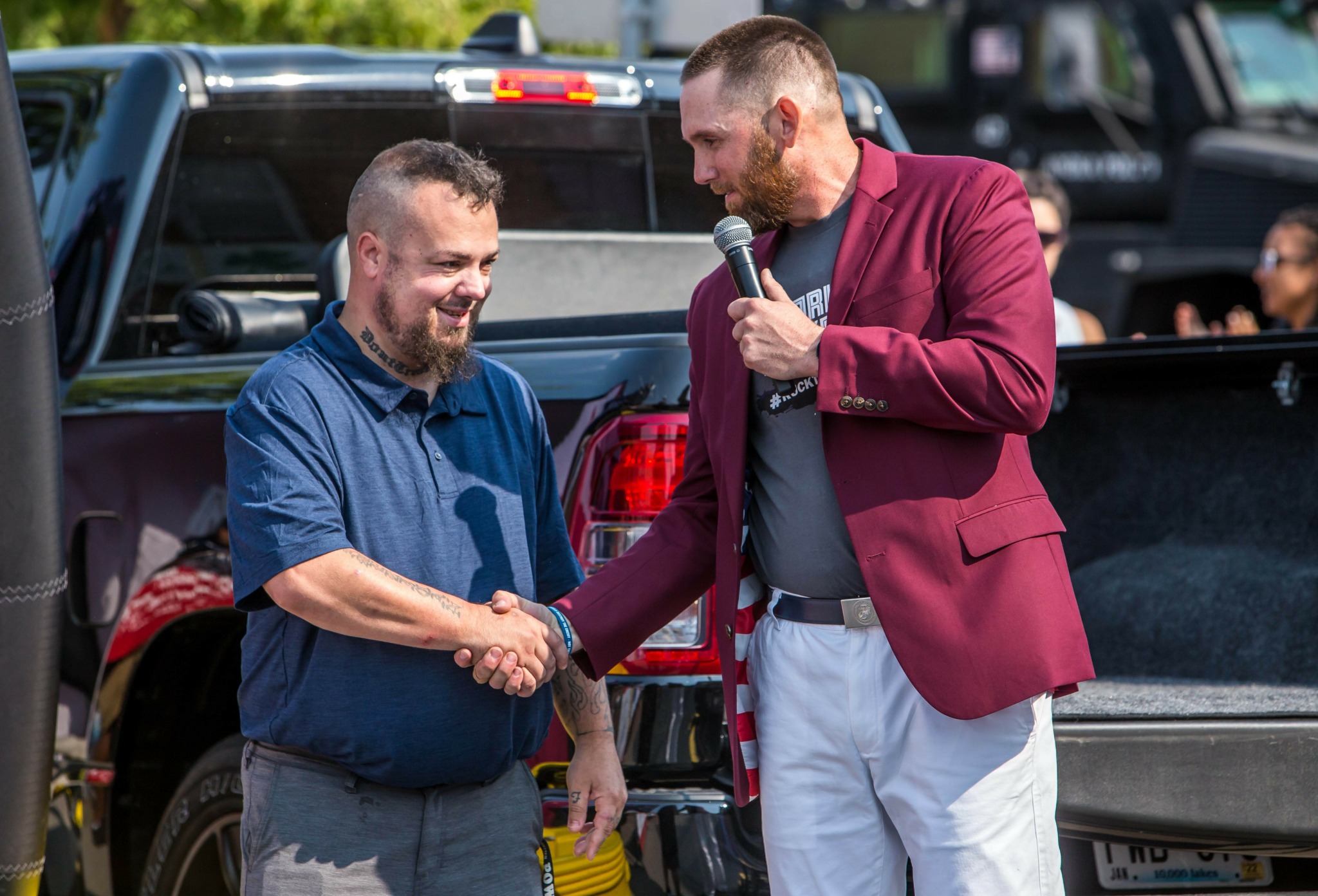We were lucky to catch up with Mike Waldron recently and have shared our conversation below.
Mike, looking forward to hearing all of your stories today. Coming up with the idea is so exciting, but then comes the hard part – executing. Too often the media ignores the execution part and goes from idea to success, skipping over the nitty, gritty details of executing in the early days. We think that’s a disservice both to the entrepreneurs who built something amazing as well as the public who isn’t getting a realistic picture of what it takes to succeed. So, we’d really appreciate if you could open up about your execution story – how did you go from idea to execution?
Leaving behind a stable federal career was one of the hardest choices I have ever made. On paper, I had security and a clear retirement path ahead of me, but inside I felt like I was not making the difference I wanted to. Worse, I often felt forced to do things that went against my values. Cashing in my retirement and walking away from that career was not easy, but moving toward a meaningful life gave me the drive to take the leap.
One of the catalysts in this transition was the Entrepreneurship Bootcamp for Veterans at the Institute for Veterans and Military Families. The program gave me the education, tools, and most importantly the confidence to step into the unknown world of entrepreneurship. It was there that I realized building a nonprofit organization is no different than building a business. The only real difference is how you define profit. While we are not focused on keeping financial gain, the return on purpose is far greater. Every time we help someone rediscover meaning, every time a veteran or first responder finds peace, connection, and emotional life again, that is a kind of wealth no dollar amount can match. In this work, value is not measured in money but in the lives that grow stronger because of what we build.
I chose to form a nonprofit because the mission came first, and execution came down to persistence. I had to learn how to translate vision into strategy, how to tell the story in a way that inspired others, and how to keep moving forward even when resources were limited. Developing systems that improve mental health and ease the transition after service was a challenge on its own. Convincing others to believe in that mission and invest in it was even harder. But those lessons shaped me as much as they shaped the organization, and they are what allowed the idea to come alive.

As always, we appreciate you sharing your insights and we’ve got a few more questions for you, but before we get to all of that can you take a minute to introduce yourself and give our readers some of your back background and context?
I am the founder and executive director of 23rd Veteran, a national nonprofit that guides military, veterans, and first responders from struggle to strength. We improve mental health and rebuild connection through a neuroscience-based approach called Functional Mental Health.
My journey into this work began with my own battle against panic attacks, isolation, and depression after my service in the Marine Corps. The turning point came when I discovered that the brain can be retrained. Through research and experience, I learned that specific, science-based behaviors can optimize the neurotransmitters responsible for happiness, motivation, and connection. That understanding became the foundation of 23rd Veteran.
We created a 14-week program that combines behavioral training, community, and physical challenge to rewire thought patterns and restore purpose. It is not traditional therapy. Instead, it provides an environment where participants actively rebuild confidence, belonging, and joy. This model has changed lives across the country and inspired other organizations to rethink how they approach mental health and trauma recovery.
What sets us apart is the focus on action over avoidance. We do not treat people as patients; we treat them as teammates. The work is physical, emotional, and deeply human. It is designed for those who would rather earn their mental health through effort, connection, and growth than sit on the sidelines waiting for change to happen.
What I am most proud of is watching people who once felt broken become leaders in their own communities. Our graduates have gone on to mentor others, strengthen their families, and even start their own service organizations. Every transformation reminds me why this work matters and why I walked away from comfort and security to pursue it.
Today, 23rd Veteran is expanding to serve first responders and partnering with institutions that want to research the long-term impact of Functional Mental Health. We are also inviting experienced business and nonprofit leaders to join our board and help us grow this mission nationally.
The main thing I want people to know is that change is possible. You can train your mind to thrive again. You can rebuild connection and find purpose, no matter how far you have fallen. That is what 23rd Veteran stands for, and it is what drives me every day.

Can you tell us about a time you’ve had to pivot?
My life’s purpose is to guide people out of isolation and into community. Research has shown again and again that social isolation is one of the leading predictors of suicide, and I had seen firsthand how belonging can be the difference between life and death. On March 16, 2020, when I learned businesses and schools were closing and people were being forced into isolation, I felt lost. I knew we were heading into years, if not decades, of additional mental health struggles, and the people we had successfully removed from isolation were being forced back into it. At the same time, I was no longer allowed to help.
As an entrepreneur, I shifted my focus toward opportunity. Seeing how runners were losing their marathons, training routines, and social connections, I quickly developed a way to keep them engaged and united. That idea became #RunTheVirus, a global virtual relay that brought people together when the world was shutting down. Within the first week of April 2020, I built the group, designed the rules, recruited referees, and created a way to track virtual batons as they passed between teammates around the world.
These were 24 hour a day races, lasting up to a week in length, where runners who had never met formed close, supportive teams that cheered each other through every mile. The top teams often finished less than a mile apart after days of running. Hundreds of runners from 36 countries joined, including elite ultrarunners from Australia and Germany. In just three months, the community ran tens of thousands of miles and hundreds of thousands of encouraging messages. Friendships formed that still exist to this day, with some participants traveling across states just to meet and run together in person.
For many, what could have been one of the darkest and loneliest times of their lives became one of the most meaningful. People who were isolated, anxious, and uncertain found purpose, camaraderie, and belonging. Years later, many still say it was one of the best and most memorable experiences of their lives.
It’s important for me to remember that the wealth of conviction and purpose is far greater than financial wealth. I have been at my happiest during times of struggle, which has shown me that the real risk is not losing money. The real risk is missing out on life by refusing to push the boundaries of what is possible. In the words of a distant cousin, Theodore Roosevelt, I would rather be marred by dust and sweat and blood than rest with the cold and timid souls who know neither victory nor defeat.

Any advice for managing a team?
The best lessons I’ve learned in leadership came from my time in the Marine Corps. There I discovered that people do not follow titles, they follow example. The leaders who earned my respect were the ones willing to shoulder the hardest burdens, take the risks alongside us, and stay steady no matter how difficult things became. That shaped how I lead today.
Later, as a federal employee, I learned a different lesson. I often felt pressured to make decisions that did not align with my values. The system was rigid, and the impact I wanted to make was buried under layers of process. That experience gave me clarity. I realized I could not lead effectively if I was not being true to who I am. I wanted to build something where integrity mattered more than image and where the mission came before comfort.
At 23rd Veteran, I believe the best way to maintain morale is to model the behavior you want to see and create an environment where people feel seen and valued. We start our meetings with gratitude, taking a moment to recognize what is going well and to acknowledge each other’s efforts. We take time to learn who we are as people, not just as professionals. We support one another through both victories and struggles, and we provide a safe space to share the thoughts and feelings that are often too easy to hide.
That approach has built a team that extends beyond the workplace. It has created an at-work community that younger generations are yearning to be a part of. People at 23rd Veteran often ask to be hired at a pay cut because they want to be part of something that matters. They are here for the purpose, not the payment. When people feel connected to a mission, respected as individuals, and safe to be themselves, high morale comes naturally.
Contact Info:
- Website: https://mikejwaldron.com
- Facebook: https://www.facebook.com/mike.waldron.395/
- Linkedin: https://linkedin.com/in/mikejwaldron/






